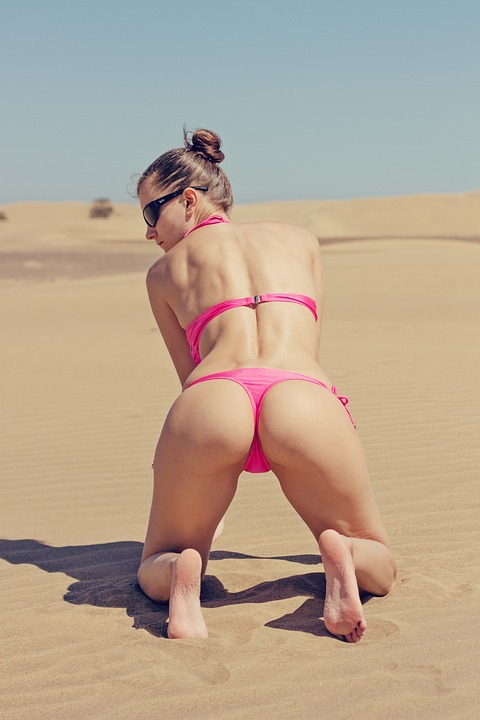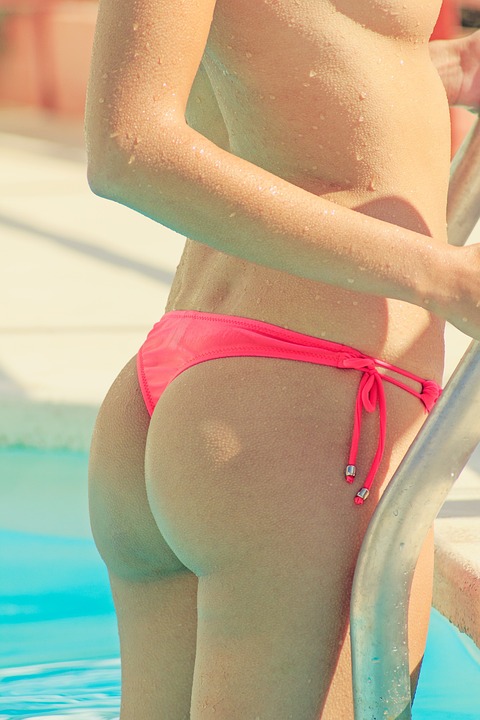Understanding Bikini Line Sweat: Causes, Prevention, and Treatment
Introduction:
Sweating is a natural process that helps regulate our body temperature, but when it occurs in sensitive areas like the Bikini Line, it can become uncomfortable and even embarrassing. In this article, we will delve into the perplexing world of Bikini Line sweat, exploring its causes, prevention methods, and possible treatment options. So, let’s dive in and uncover the secrets behind this burst of moisture that affects many individuals.
What Causes Bikini Line Sweat?
Bikini Line sweat occurs due to the presence of sweat glands in the pubic area, which are responsible for producing sweat. These glands are part of the body’s thermoregulatory system, designed to cool the body down. However, the Bikini Line area is prone to excessive sweating due to factors such as hormonal changes, high temperatures, physical activity, and tight clothing.
1. Hormonal Changes:
Hormonal fluctuations, particularly during menstruation, pregnancy, or menopause, can cause an increase in sweat production in the Bikini area. The surge in hormones can trigger the sweat glands, leading to excessive perspiration and discomfort.
2. High Temperatures:
Hot and humid weather can stimulate the sweat glands, resulting in Bikini Line sweat. The combination of heat and moisture can create the perfect environment for sweat to accumulate and cause irritation.
3. Physical Activity:
Engaging in physical activities such as exercise or sports can lead to increased body temperature, causing the body to sweat more. The Bikini Line area, being in close proximity to the thighs and genital region, is prone to sweat accumulation during these activities.
4. Tight Clothing:
Wearing tight-fitting garments, especially synthetic materials that do not allow proper airflow, can trap heat and moisture around the Bikini Line area. This can intensify sweating and create an uncomfortable environment.
Preventing Bikini Line Sweat
While it may not be possible to completely eliminate Bikini Line sweat, there are several preventive measures that can help reduce its occurrence and alleviate discomfort.
1. Choose Breathable Fabrics:
Opt for breathable fabrics like cotton or moisture-wicking materials for your underwear. These fabrics allow air circulation, preventing moisture buildup and reducing sweat production in the Bikini area.
2. Avoid Tight Clothing:
Avoid wearing tight-fitting garments, particularly around the Bikini Line area. Loose-fitting clothing allows for better airflow, reducing the chances of sweat accumulation and irritation.
3. Maintain Proper Hygiene:
Good hygiene practices are essential in preventing Bikini Line sweat. Regularly wash the area with a mild, fragrance-free cleanser and pat dry gently. Avoid using harsh soaps or excessive scrubbing, as these can disrupt the natural balance of the skin.
4. Use Antiperspirants:
Consider using antiperspirants specifically designed for the Bikini area. These products can help control sweat production and keep the area dry. Look for antiperspirants that are free from fragrances and harsh chemicals to minimize potential irritation.
5. Stay Hydrated:
Drinking an adequate amount of water helps regulate body temperature and can reduce excessive sweating. Proper hydration ensures that your body is well-equipped to handle temperature changes and prevents overheating.
Treatment Options for Bikini Line Sweat
If preventive measures are not sufficient in managing Bikini Line sweat, there are various treatment options available to alleviate the condition.
1. Topical Treatments:
There are over-the-counter topical creams and powders available that can help reduce sweat production and keep the Bikini area dry. These products often contain ingredients like aluminum chloride, which temporarily blocks sweat glands.
2. Laser Hair Removal:
Hair removal methods such as waxing or shaving can contribute to sweat accumulation in the Bikini area. Laser hair removal offers a long-lasting solution by reducing hair growth and, consequently, sweat production. Consult a dermatologist or licensed practitioner for this treatment.
3. Botox Injections:
In severe cases of excessive sweating, Botox injections can be considered. Botox works by blocking the signals that stimulate sweat glands, reducing sweat production. This treatment is temporary and requires repeat injections every few months.
Conclusion:
Bikini Line sweat can be a perplexing and bothersome issue for many individuals. Understanding its causes and implementing preventive measures can help manage and reduce sweat production in the Bikini area. If conservative measures are ineffective, treatment options such as topical creams, laser hair removal, or Botox injections can provide relief. Remember, it’s essential to consult a healthcare professional for proper diagnosis and guidance in managing Bikini Line sweat. Stay dry, comfortable, and confident!
Faqs Regarding Bikini Line Sweat
What is Bikini Line sweat?
Bikini Line sweat refers to the perspiration that occurs in the area surrounding the Bikini Line, which is the area where the pubic hair grows and where the edge of a Bikini bottom typically rests. This sweat can be caused by a variety of factors, including physical activity, hot weather, and hormonal changes.
The three most important pieces of information about Bikini Line sweat are:
1. Bikini Line sweat is the perspiration that occurs in the area surrounding the Bikini Line.
2. It can be caused by factors such as physical activity, hot weather, and hormonal changes.
3. Proper hygiene and care can help manage and prevent Bikini Line sweat.
Why does Bikini Line sweat occur?
Bikini Line sweat occurs due to a combination of factors. Physical activity and hot weather can both increase sweat production in the body, including the Bikini Line area. Additionally, hormonal changes, such as those that occur during menstruation or menopause, can also contribute to increased sweat production.
The three most important pieces of information about why Bikini Line sweat occurs are:
1. Physical activity and hot weather can increase sweat production in the Bikini Line area.
2. Hormonal changes, such as those during menstruation or menopause, can also contribute to increased sweat production.
3. Certain fabrics and tight clothing can exacerbate Bikini Line sweat.
How can I manage and prevent Bikini Line sweat?
There are several ways to manage and prevent Bikini Line sweat. Firstly, maintaining proper hygiene is crucial. Regularly washing the Bikini Line area with mild soap and water can help keep it clean and reduce sweat buildup. Additionally, wearing breathable underwear made of natural fibers, such as cotton, can help absorb moisture and prevent excessive sweating.
The three most important pieces of information about managing and preventing Bikini Line sweat are:
1. Maintaining proper hygiene by regularly washing the Bikini Line area with mild soap and water is crucial.
2. Wearing breathable underwear made of natural fibers, such as cotton, can help absorb moisture and prevent excessive sweating.
3. Avoiding tight clothing and opting for looser, more breathable fabrics can also help manage and prevent Bikini Line sweat.
Are there any products specifically designed for Bikini Line sweat?
Yes, there are various products available in the market that are specifically designed to address Bikini Line sweat. Antiperspirants and deodorants formulated for sensitive skin can be applied to the Bikini Line area to reduce sweating and control odor. There are also powders and creams available that can absorb moisture and provide a dry, comfortable feeling.
The three most important pieces of information about products for Bikini Line sweat are:
1. Antiperspirants and deodorants formulated for sensitive skin can be applied to the Bikini Line area to reduce sweating and control odor.
2. Powders and creams specifically designed for the Bikini Line can absorb moisture and provide a dry, comfortable feeling.
3. It is important to choose products that are gentle and suitable for the sensitive skin in the Bikini Line area.
When should I seek medical advice for excessive Bikini Line sweat?
While occasional Bikini Line sweat is normal, excessive sweating in the Bikini Line area may require medical attention. If the sweating is accompanied by other symptoms such as persistent itching, redness, or a foul odor, it is advisable to consult a healthcare professional. They can help determine the underlying cause and provide appropriate treatment options.
The three most important pieces of information about seeking medical advice for excessive Bikini Line sweat are:
1. Occasional Bikini Line sweat is normal, but excessive sweating accompanied by other symptoms should be evaluated by a healthcare professional.
2. Symptoms such as persistent itching, redness, or a foul odor may indicate a need for medical attention.
3. Consulting a healthcare professional can help determine the underlying cause and provide appropriate treatment options for excessive Bikini Line sweat.
1. Bikini Line Sweat is only caused by poor hygiene
Contrary to popular belief, excessive sweating in the Bikini Line area is not solely caused by poor hygiene. While maintaining good hygiene is crucial, sweat can still accumulate in this area due to various factors unrelated to cleanliness. Sweat glands are present throughout the body, including the Bikini Line, and their activity can be influenced by hormonal changes, physical activity, and even external temperature.
2. Bikini Line Sweat is exclusively a problem for overweight individuals
Another common misconception is that only overweight individuals experience excessive sweating in the Bikini Line area. However, this is far from the truth. Sweat production is a natural bodily function that can occur in people of all shapes and sizes. While excess weight can contribute to increased sweating due to factors such as additional layers of fat insulation, it is not the sole determinant of sweat production in the Bikini Line area.
3. Shaving the Bikini Line eliminates sweat entirely
Many people believe that shaving the Bikini Line completely eliminates sweat production in that area. However, this is not entirely accurate. Shaving may temporarily reduce the appearance of sweat by removing hair that can trap moisture, but it does not stop the underlying sweat glands from producing moisture altogether. Sweat production is a natural bodily function that cannot be eliminated solely through shaving or hair removal methods.
4. Bikini Line Sweat is always accompanied by a foul odor
While sweating can sometimes be accompanied by an unpleasant odor, it is not always the case for Bikini Line sweat. The presence of odor depends on various factors such as bacterial activity, hormonal changes, and personal hygiene practices. Some individuals may experience sweat without any noticeable odor, while others may experience a more noticeable odor due to factors such as bacteria breaking down sweat on the skin. It is important to note that a foul odor in the Bikini Line area may not necessarily indicate poor hygiene.
5. Only women experience excessive sweating in the Bikini Line area
Contrary to popular belief, excessive sweating in the Bikini Line area is not exclusive to women. Both men and women have sweat glands in this region, and their activity can vary from person to person. While societal norms may focus more on women’s hair removal and hygiene practices in this area, men can also experience sweat accumulation, especially during physical activity or in hot weather. It is essential to recognize that excessive sweating in the Bikini Line area can affect individuals of all genders.


